Physical Address
304 North Cardinal St.
Dorchester Center, MA 02124
Physical Address
304 North Cardinal St.
Dorchester Center, MA 02124
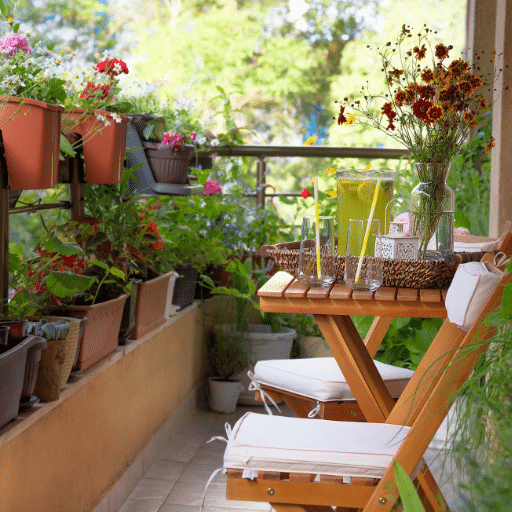
Urban gardening is completely changing the way people living in cities experience nature. It demonstrates the fact that to have a garden with lots of plants, you do not need a big area of land. Urban gardening is the link between creativity and sustainability, whether it is a balcony full of herbs, a windowsill with succulents, or a roof with fresh vegetables. This guide will equip the city people with the necessary knowledge to develop their own green areas, no matter what their size and skill level are. From selecting the proper plants for your surroundings to the inventive techniques that will help you make the most of your space, you are going to learn the secrets of realizing your urban oasis dream. Never has there been a better time to start an urban garden, with the issues of food security, mental health, and environmental impact getting worse. Let’s start!
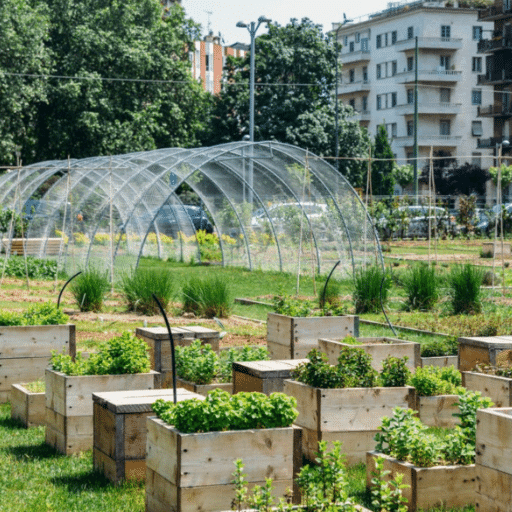
Improved Food Security – Individuals are able to grow fresh produce via urban gardening, which not only decreases their reliance on the items in the store but also increases access to healthy, nutritious food.
Enhanced Mental Well-Being – It is widely accepted that gardening has a stress-relieving effect, improves one’s mood, and creates a feeling of achievement.
Environmental Impact – The existence of green spaces within cities minimizes the urban heat island effect, cleans the air, and supports biodiversity.
Efficient Use of Space – Through the use of vertical gardening and container gardening, plants can be grown even in very limited spaces.
Economic Savings – The home-grown varieties of fruits, vegetables, and herbs will greatly lessen the grocery expenses and also contribute to the self-sufficiency of the household over the long term.
The impact of gardening on the environment is fundamentally positive as it leads to a healthier and more eco-friendly ecosystem. The presence of green areas, even if they are small in the city helps to cope with the heat in the city by reducing the temperature around them. Furthermore, plants are responsible for both negative and positive aspects of the air quality: while they are absorbing carbon dioxide and releasing oxygen, they are also filtering the air by getting rid of some of the pollutants and dust. Moreover, gardening opts for the coexistence of different species, thus making the environment livelier, with bees and butterflies being the first to get the benefits. Moreover, urban gardeners can introduce certain practices like composting and water conservation, which will not only minimize their environmental footprint but also enrich the local environment.
Gardening is a great way to stay healthy it is a very active and engaging activity that benefits both body and mind. On the physical level, it is like doing fitness; the strength, flexibility, and stamina of the cardiovascular system are improved through activities such as digging, planting, and weeding. On the mental side, gardening is known for therapeutic effects like stress reduction, mood enhancement, and promotion of mindfulness, since it connects the individual with nature and gives a sense of accomplishment. Furthermore, the availability of fresh fruits, vegetables, and herbs will motivate people to eat healthier, and thus the nutrient-rich food options will be of support to one’s well-being.
Community engagement is the fundamental aspect of building relationships and the total well-being of the community. Community engagement is the participation of individuals in local events, volunteering activities, and within the frameworks of collaborative projects through which people get to know each other and work together towards their common goals. When people are involved in the community, they will be able to occupy their time with building personal connections, fortifying social ties, and creating a place where they feel they belong. They will also be able to utilize their abilities and goods for the community’s benefit, while at the same time being part of and benefiting from dealing with local problems and opportunities. By being engaged, a person not only creates a meaning of life for himself/herself but also gives a positive input to the lives of others around him/her, thus, a lively and caring community environment is formed.
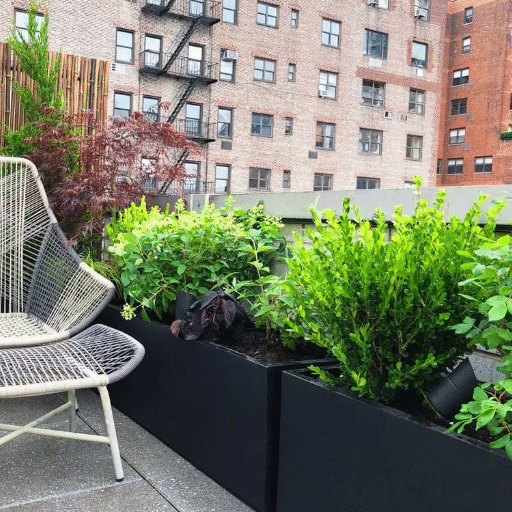
Starting an urban garden will reward you with fresh food or a nice, green place to stay. To start with, a good location in the sun, such as a balcony, rooftop, or windowsill should be selected. Next, an appropriate drainage and stability plant support will be the raised-bed or pots of your choice. High-quality potting soil is a must and planning of the best plants with local climate and space regulations should be done. Easy-going seedlings like herbs, lettuce, or tomatoes may be planted first. Also, water and care your garden regularly by performing the weeding, pest-checking process to the plant’s healthy growth.
If you want to grow your plants in a place where they will receive direct sunlight, you must do it the right way and choose the right spot for the garden. He will need six to eight hours of sunlight each day. Most of the plants also need this light for their development. You can identify the places with consistent light by watching your space, but you have to consider that the shadow from the nearby structures or trees may affect the light exposure. In case you are going to plant trees and flowering plants in an indoor garden or in a shaded outdoor garden, use plants that can cope with low light or apply a grow-light as an alternative. It is very important to have good drainage, so it is good to choose a location where the rainwater will not be stagnant or where the soil is not too wet. Finally, change the selection of plants and the arrangement to the conditions of your location for the best results.
An area of urban gardening that can be easily mastered is the use of gardening tools, which, of course, are essential to the operation. Introducing a basic set that will be reliable, and your labor will be easy and efficient. Start your gardening with a high-quality hand trowel and hand fork for digging, planting, and weeding in confined areas. Long-term investment in good post-planting shears is very important for pruning and controlling the growth of the plants. The same stable garden hoe will do soil workspace preparation and weed removal in big spots. For watering needs, the plants will get the right amount of water either from a watering can or a hose with a spray attachment and a reliable above-ground watering system. Don’t forget about the gloves used for your hand protection and a wheelbarrow for moving soil, compost, or heavy material. The presence of these multipurpose tools will change your gardening experience to be pleasurable and productive.
When selecting edible plants, pay attention to the local climate, soil type, and the amount of space in your garden. Opt for plants that not just survive but are flourishing in your area according to the seasons; for instance, tomatoes and peppers love the heat while spinach and the rest of the greens prefer the cold weather. Assess the quality of your soil by measuring its pH and nutrient levels, if they are not appropriate for the chosen plants, do the necessary adjustments through soil amendments. Furthermore, choose varieties based not only on your palate but also on how much time you have for care, as some plants will be more demanding than others. With your thoughtful planning, you will be able to create a vibrant and productive edible garden that fits into your lifestyle.
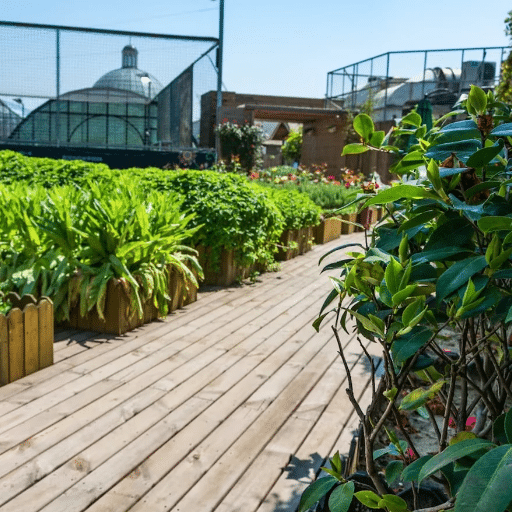
Urban agriculture utilizes numerous methods to grow food in city areas. It was capable of making full use of scarce areas and at the same time promoting sustainable practices. The major methods are:
Container Gardening: planting of any kind in containers, which could be pots, buckets, or other portable types, the perfect movement for balconies and limited yard space.
Vertical Gardening: the use of walls, shelves, or trellises for growing plants that climb like beans or plants like herbs that grow short and compact.
Hydroponics: not using soil for planting but nutrient-rich water solutions instead, a method that is suitable for indoor and controlled environments.
Community Gardens: gardening spaces that is shared where individuals, persons or groups grow crops together and the gardens are open to all.
Rooftop Farming: the taking of unused rooftop areas for growing vegetables, herbs, or even flowers.
These methods make it possible for the production of fresh food in urban areas, they also minimize the environmental impact, and at the same time, improve the community’s access to healthy and locally-sourced produce.
Container gardening is a flexible and accessible way of growing plants in pots, boxes, or any other type of movable containers. This method is perfect for limited spaces like balconies, patios, or windowsills, thus making it convenient for the city. It gives gardeners total control on soil quality, drainage, and light exposure, which can be varied according to different plants. Furthermore, container gardening is a way that greatly reduces the possibility of soil-borne disease and pest problems and thus provides the best growing condition for the plants. The people who practice this can have the benefits of fresh fruits and vegetables, attractive flowers, or even small bushes, all in a space-efficient and easy to take care of environment.
Vertical gardening is a creative approach that makes use of the space by growing plants upwards on walls or trellises instead of taking the ground area horizontally. This method works best for small areas like balconies, patios, or urban places, and transforms unoccupied vertical spots into a garden that is green and full garden. Vertical gardens generally apply modular systems or hanging structures, which make them, unlike conventional gardens, very versatile and they can also be designed for different plant types, including herbs, vegetables, and decorative plants. With the right watering system and regular care, vertical gardening can make the city greener and more beautiful, and at the same time, it could even produce food, conducting such activities with very little space and resources.
Hydroponics in the city opens up a new way of thinking for urban agriculture by presenting a situation where plants are grown without soil instead, by using nutrient-enriched water. Particularly, it is the method of choice for heavily populated areas where the availability of traditional farming land is minimal. Hydroponic systems can be established in either indoor settings or on rooftops, bringing about a crop cultivation cycle that is not limited by seasons and also contributes to the efficient use of water. Moreover, it leads to the minimization of the need for chemical interventions thus having a lesser carbon footprint and consequently being an eco-friendly solution for urban agriculture.
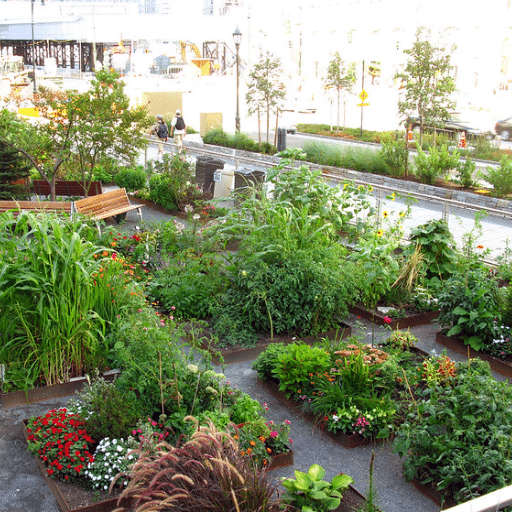
Choose the Right Pot: Opt for a container that has enough drainage holes to avoid the accumulation of excess water. Also, the size of the pot must be adequate for the plant both at present and in the future.
Use Quality Soil: Pick a potting mix that is well-aerated, rich in nutrients, and specifically made for the particular plant type. Don’t use garden soil for potted plants because it can become hard and the roots won’t be able to grow and thrive.
Proper Planting Depth: When you plant a new plant, make sure it is at the same level as it was in the previous pot to protect it from rotting the stem or getting the roots improperly developed.
Watering Correctly: After planting, thoroughly soak the plant until water comes out from the bottom. Check the moisture level of the plant regularly and keep it consistent by watering it, but not overwatering.
Provide Adequate Light: Put the plant in a spot where it will get the amount of sunlight that is considered to be the best for its growth, whether it is full sun, a little shade, or very little light.
Fertilize Wisely: Give the plant a balanced fertilizer once in a while to keep the nutrient supply flowing, especially the ones that are most crucial for the plant. Take care to adhere to the fertilizer instructions to prevent killing the plant by giving too much fertilizer.
Monitor for Pests and Disease: Make it a practice to check your plants frequently for any signs of pests or diseases and take the necessary measures fast to stop the spread or reduce the damage.
A correct choice of pots requires taking into account the size, the kind of material used, and the drainage features. The pot should be of an appropriate size for the plant to temporarily fit and eventually grow. The terracotta, plastic, and ceramic types have pros and cons; for example, terracotta allows breathing but dries out quickly while plastic is moisture-retaining. Drainage is very important to avoid water-rotting of roots, so the pot should have enough holes at the bottom to allow water to drain. Besides, the decorative style and design of the pot could also be a great way to complement your aesthetic preferences, so it should be both functional and pleasing to the eye
It is of paramount importance to make the right choice as far as soil and fertilization methods are concerned to ensure proper plant growth. Get soil that is capable of holding moisture while also being well-drained and rich in nutrients. For a large number of plants, a combination of organic matter, such as compost, together with potting soil, is sufficient. Fertilization must be the plant’s specific needs, and it is often a case of providing a nutrient mix that is equal in nitrogen, phosphorus, and potassium. Slow-release fertilizers can continue feeding plants over a long period, while liquid fertilizers provide quick supplementation. Be careful to adhere to the recommended application schedule to avoid the adverse effects of over-fertilizing, which can adversely affect the plant.
The first step towards effective garden watering is to determine the plants’ different water needs, as some require more moisture than others. The ideal time for watering is early morning or late afternoon, as this will minimize evaporation and the soil will be able to absorb water thoroughly. Deep and infrequent watering promotes extensive root system growth, while the opposite can lead to weak plants. Besides, using mulch helps keep the soil moist and eliminates the need to water extra plants, which in turn saves water. Moreover, always test the moisture level in the soil before watering to prevent overwatering, which can result in root rot and other problems.

A healthy urban garden needs a regular inspection of plants to detect pests or diseases. To stop spreading, immediately eliminate the affected leaves or stems. To keep at bay, introduce natural predators like ladybugs or if necessary, use organic insect soap. As well as keeping proper distance between plants for the airflow to come and the mucilage diseases to be less, do the crop rotation of the soil seasonally to prevent the soil-borne diseases and to keep it alive and productive. Always veil of clean tools and also do not overwater, as damp conditions are a favorite for pests and diseases.
A good pest management system consists of preventative practices and active interventions in a certain proportion, more or less balanced. Start by regularly checking your plants for discoloration, holes, or bugs as the first signs of an infestation. If they do show up, release their natural enemies, like ladybugs or parasitic wasps, to deal with them in an eco-friendly way. If you want to have better control, try using neem oil or insecticidal soap, but do so very carefully by following the label instructions so that you won’t harm the good insects in the process. Besides, treating the plants right with proper spacing, sun, and watering goes a long way in lessening the chance of pests’ development. Cleaning gardening tools regularly is a good practice to prevent inadvertently transferring pests or diseases.
Caring for edible plants on a seasonal basis means modifying the practices according to the changing needs of the plants during the year. In spring, the preparation of the soil by compost and the early planting of cool-season crops such as lettuce or spinach in the season are the main activities. Summer will demand constant watering, moisture retaining by mulching, and weeding to limit competition. Keep pest control under your watch and attend to it in case of necessity, preferably using the organic methods. The autumn season signals the harvesting of mature crops such as garlic or root vegetables, while at the same time planting less hardy types of crops. Clear away plant debris so that they do not provide a shelter for pests during winter. In the winter, cover perennials with mulch and do organizing and reviewing of plant performance as part of the next growing season’s planning. The execution of such practices is a guarantee of the production of healthy and bountiful edible plants throughout the year.
When it comes to harvesting your crops, timing is the key to peak flavor and quality. Wait for the plants to give you signals like a change in color, firmness or size in line with the normal growth of the crop before you take them. Use clean and sharp tools to prevent plant injury, thus reducing their productivity. Morning is the best time for harvesting because freshness is maintained and produce lightly handled is bruised less. For root crops, the soil should be loosened before the vegetable is pulled to prevent breaking it. After harvest, the next step is storage, which has to be done in accordance with the individual storage requirements to get the longest shelf-life and highest nutritional value. In some cases, like with herbs, beans, or zucchini, regular harvesting might be the reason for continuous growth.
Urban gardening means planting in cities with many people live. It can be anything like a rooftop garden, window boxes, a backyard, or community plots. The gardeners on urban areas generally make use of the available space to give out plants, fruits, and vegetables that help feed the locals. Urban, as city, farmers use just a little land with the help of focusing on their small-scale gardening techniques to produce all the fruits and vegetables. The practice is directly feeding urban people and so reducing food miles and carbon footprints.
Urban gardening has plenty of advantages, both social and environmental. It also supports food supply in cities by allowing people living in urban areas to get fresh fruits and vegetables. Also, gardening is getting to be a way of developing community engagement and aiding in the adoption of sustainable practices at the same time. In other words, urban farms can become the saviors of cities during heat waves through the provision of plantations that cool the atmosphere due to their water content. Besides, living plants also help to keep the air fresh and indirectly support the ecosystem services through a few of their roles in the urban environments.
To start an urban farm it is a must to analyze and plan the place very carefully before one can utilize. The first step is to identify any empty lot or backyard area where a garden bed can be put. For shallow-rooted plants, pots or hanging baskets could be some containers to consider. Urban gardeners also need to learn gardening tips, such as how much sun and water does your garden requires, plus which organic fertilizers, like coco peat, are the best of all that are available. That way, they can start from the smallest and easily scale up to the most productive urban spaces.
When it comes to planting an urban garden, choose plants that will not take up much space but can tolerate different conditions. Among popular selections are flowering plants, greens like lettuce and spinach, and cucumbers and tomatoes as fruits. Urban gardeners even grow trees in pots hanging on their windows, as most of them prefer to have plants that can fit into window boxes or hanging baskets so as not to waste space. It is very important to check if the plants are getting the right amount of sunlight and that the soil and water conditions are just right for them to grow properly. Picking the proper varieties will make urban farming a rewarding experience.